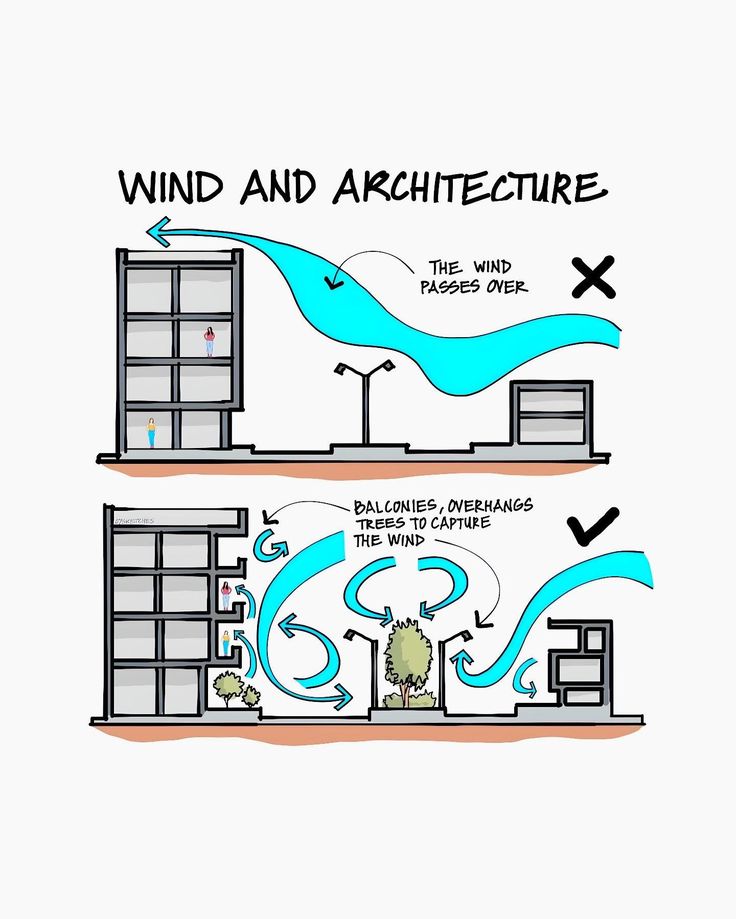❌ Wrong Approach: Wind Passing Over
- In the top image:
- The building is tall and flat.
- Wind flows over the structure without entering.
- Result:
- Poor ventilation indoors
- Hot, stagnant air
- Increased need for mechanical cooling (fans/AC)
It’s like trying to cool a sealed box—the wind simply skips the space.
✅ Correct Approach: Capturing the Wind
- In the bottom image, the design changes:
- Balconies & overhangs act as wind catchers.
- Trees help redirect and channel breezes.
- Openings and gaps funnel air into the building.
- Result:
- Improved natural cross-ventilation
- Cooler, fresher interiors
- Less reliance on artificial cooling → energy savings
This design turns buildings into “air channels” rather than “wind blocks.”
🌟 Design Tips to Capture Wind
- Balconies & Projections → pull wind into living spaces.
- Green Landscaping → trees and plants redirect airflow.
- Overhangs & Shading Devices → guide wind and provide comfort.
- Courtyards & Voids → create pressure differences that draw wind in.
- Orientation → position openings toward prevailing winds.
🔑 Why It Matters
- 🌱 Sustainable cooling → reduces energy consumption
- 🏡 Comfort → naturally ventilated spaces feel fresher
- 🌍 Eco-friendly → less dependency on air conditioning
💡 In short:
If your building blocks the wind, you’ll suffer heat and poor airflow. But if your design captures and channels the wind, you get natural comfort and energy efficiency.
